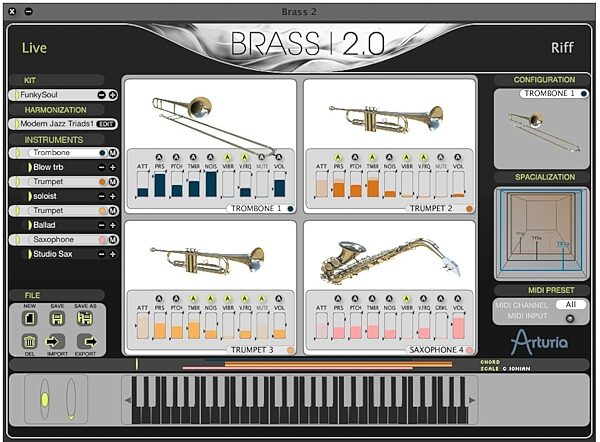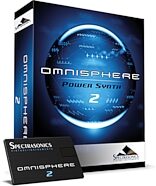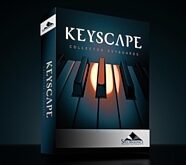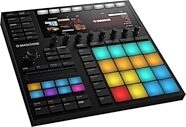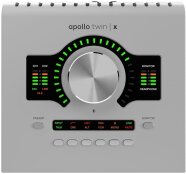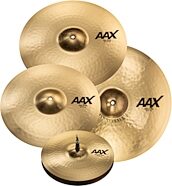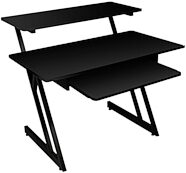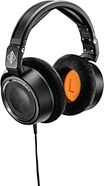Arturia Brass Physical Modeling Software Synth
No longer available at zZounds
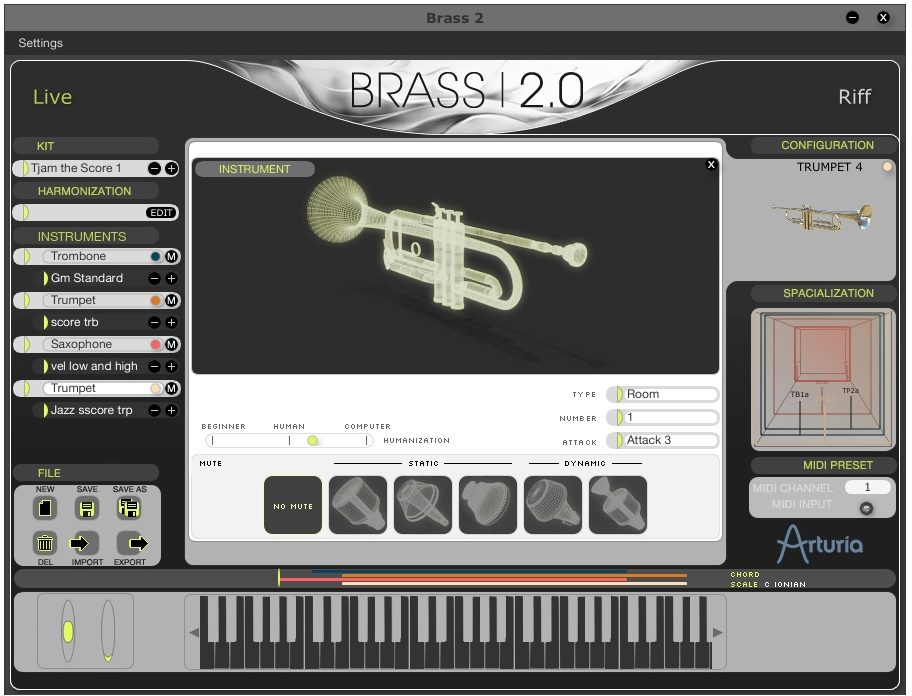
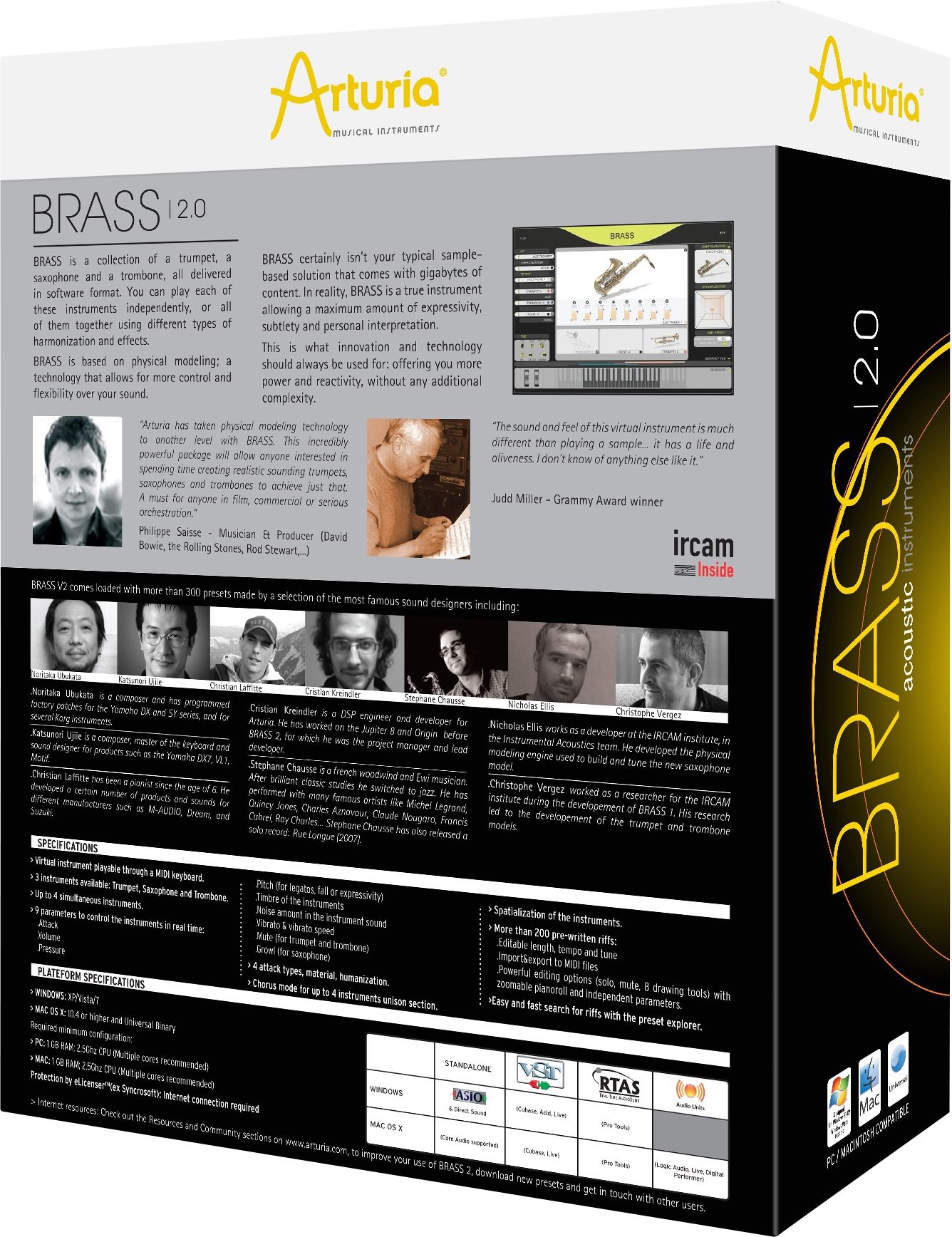
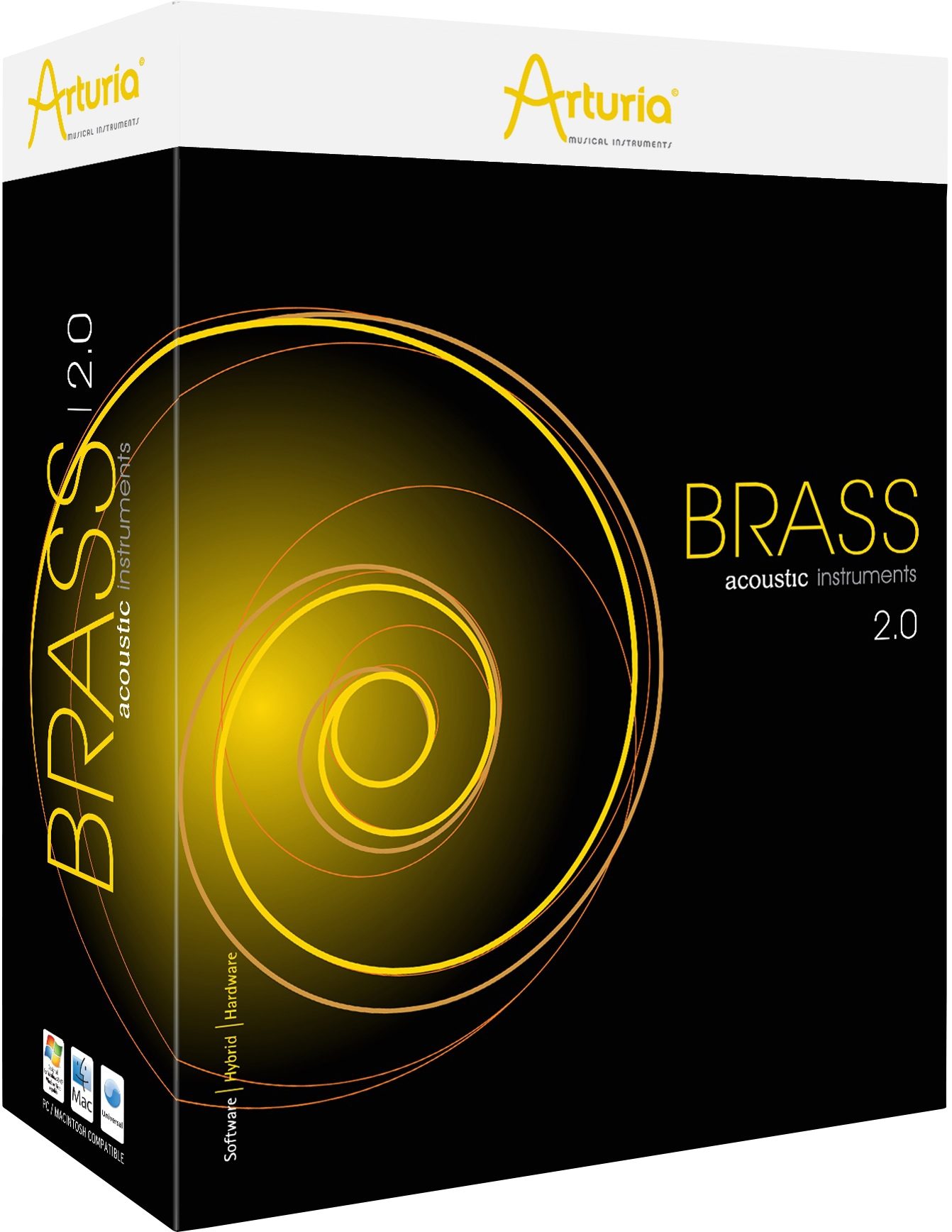

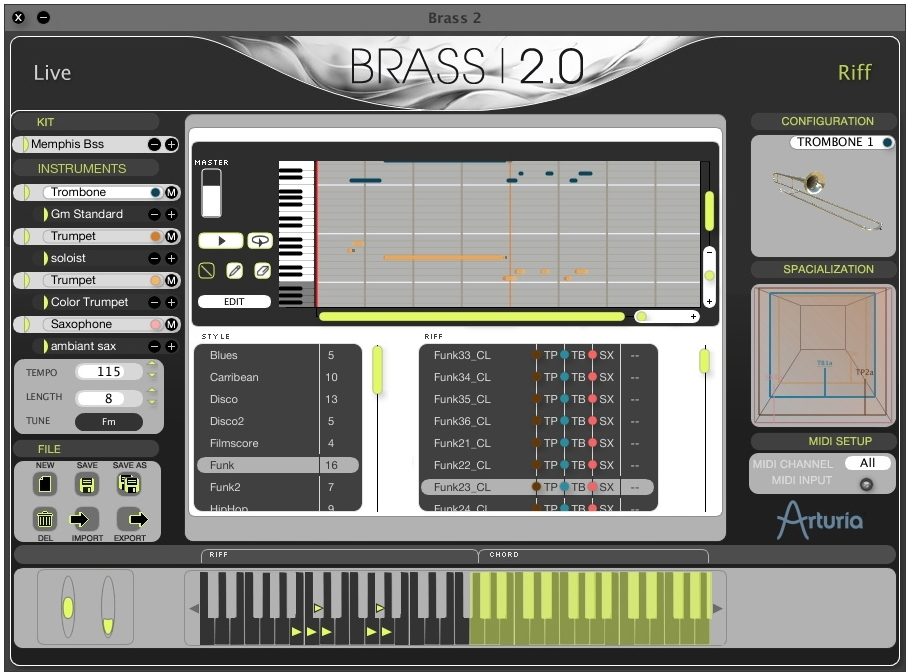
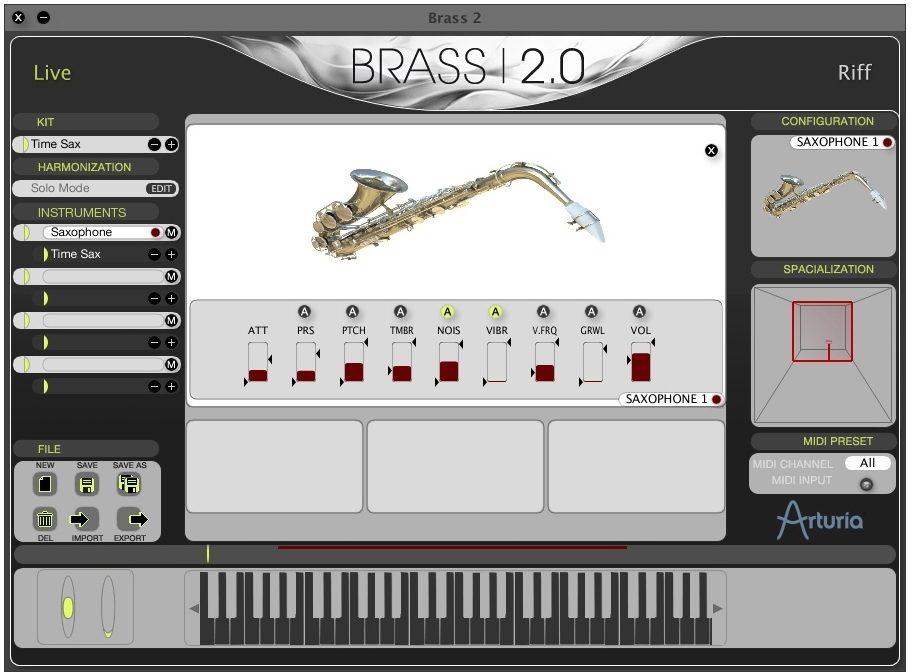
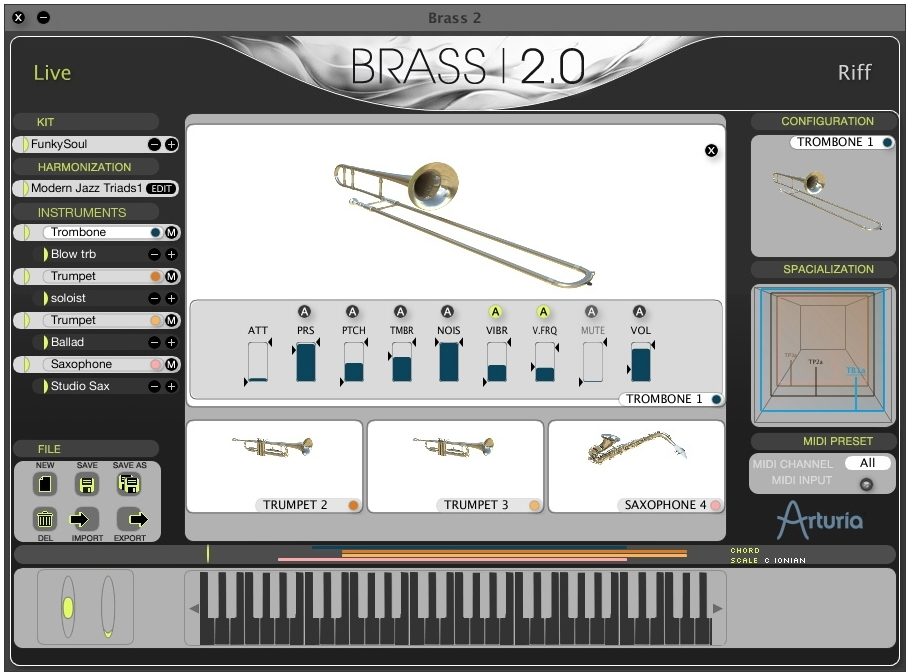
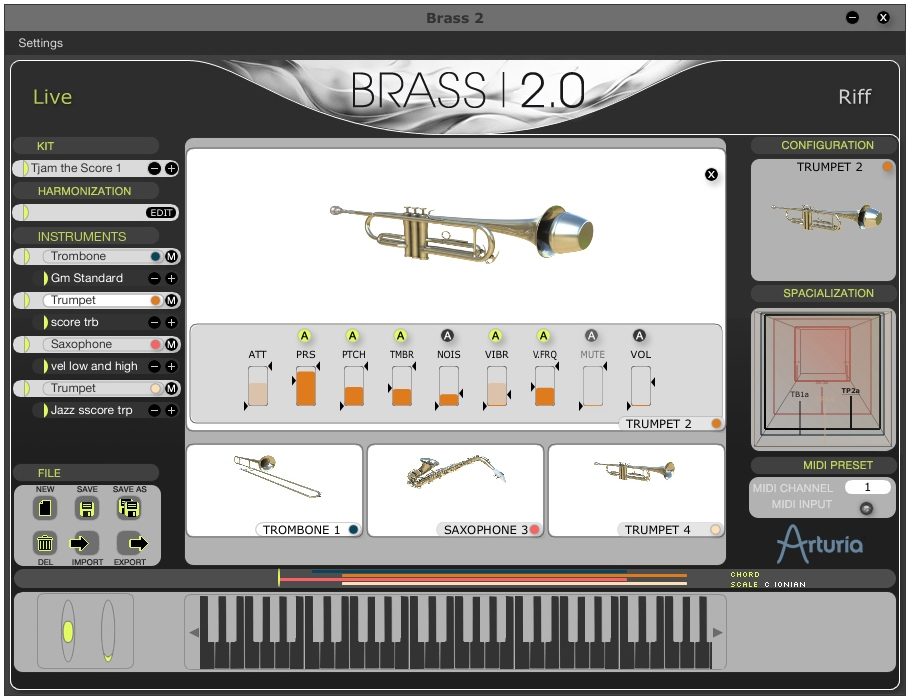
zZounds Gear Experts Say...
Lay down natural-sounding trumpet, trombone and saxophone parts in any of your songs with this versatile virtual collection of instruments.
Overview
Brass 2.0 is a new kind of virtual instrument based on a physical modeling technology. It emulates a Trumpet, a Trombone and a Saxophone. All the characteristics of the real instruments have been analyzed and modeled through extensive research at world-renowned IRCAM institute. Arturia has partnered with this highly skilled team of researchers to bring this groundbreaking technology to the musician, in the form of a software instrument. Brass is an extremely expressive, flexible and controllable instrument, and thus a fantastic alternative to loops or music libraries.
Brass V2 is a collection of a trumpet, a saxophone and a trombone, all delivered in software format. You can play each of these instruments independently, or all of them together using different types of harmonization and effects.
Brass V2 is based on physical modeling; a technology that allows for more control and flexibility over your sound.
It certainly isn't your typical sample-based solution that comes with Gigabytes of samples. As a matter of fact, Brass V2 is a real instrument allowing for a lot of expressivity, subtlety and personal interpretation.
Learning how to use Brass in-depth usually takes a couple of hours, but be assured you will never go back to using samples. This is what innovation and technology should always be used for: offering you more power and creativity, without any additional complexity.
New Saxophone model: In Version 2, Brass comes with a new saxophone model. It is based on a… read more tenor saxophone by Buffet-Crampon. We have also reproduced two different mouthpieces, one classical and one jazz.
New Harmonization: As you can now play four different instruments at a time, we bring you a new harmonization engine that is extremely easy to use. Sections, duets, trios, all these are now possible.
New Spatiality: Realism mainly comes from the core instrument models, but also from the recording scenery. The new spacialization adds a new level of possibilities to your brass parts.
New MIDI integration: In version 2, Brass comes with a better integration in the musician's studio. MIDI settings will allow you to easily decide whether you control Brass using a simple keyboard, a breath-controler, an Akai EWI, a Yamaha WX5 and more.
New Riff organization: While Brass is primarily a set of instruments to play, it also comes loaded with hundreds of pre-written phrases. Organized by style, such as Hip-Hop, Latino, Rock, Jazz or even Military, they make it easy for non-players to insert realistic brass parts in their music. All of these phrases can be quickly and dramatically modified in all aspects.
Physical Interfaces: When interacting with a physical model, the importance of the control is capital. If the instrument has been emulated within the Brass software, the way you will play it is certainly a part of the full experience.
We find that the physical interfaces are such an integral part of Brass that we have devoted a page specifically to them. In this section you'll find out a little more about the Physical Interfaces and the large effect they can have on your musical creation. Remember: physical interfaces are used in both playing modes offered in Brass: Riff and Live.
- Keyboard, with or without (polyphonic) aftertouch
- knobs, sliders
- Foot pedals
- Joystick
- Breath Controller or Ribbon
Keyboard: In using the possibilities of control offered by the keyboard (velocity or aftertouch for example) you are going to be able to get closer to the level of expression of a master instrumentalist on the trumpet, saxophone, or the trombone.
The velocity is the force with which the keys of the keyboard are pushed. Using the easily modifiable connections given in the presets, we can connect the Velocity on the "Attack" parameter and from then on it will be the force with which you push the key that decides the attack of the note.
The aftertouch is a function that certain MIDI keyboards offer. It is the measure of pressure value on the keys over a period of time. In effect, you can decide to push strongly on the keys, then release, then push with a different amount of force, etc. The keyboards that save the variations permit a control really close to Brass.
If you were to link the aftertouch to a parameter such as pressure, you could control the pressure sent to the instrument simply by pushing the key.
Breath Controller: The MIDI breath controller is offered only in Live mode and is an ideal tool for augmenting the realism of playing in Brass.
Thanks to Breath Control, you can control the intensity of pressure with more precision or, for example, make vibrato effects; thus, you will have mastered the intensity and speed. The breath control is most useful when linked to the attack and the pressure. Parameters such as "pitch" you will usually decide with the keyboard.
- Harmonization module to control the polyphonic multi-timbral instrument kits (60 kits)
- New "brassing" effect used in trumpets and trombones (tightens up attacks)
- New set of presets, riffs and kits: 75 presets,160 riffs & 60 kits
- New organization of MIDI controls allowing easier editing and better control (includes support for the Akai EWI)
- Customize instrument characteristics (musical style, attack,use static or dynamic mutes, humanize)
- Place the instruments in a virtual stereo space with optional ambience reverberation.
- Virtual instrument playable through a MIDI keyboard
- Three physically modeled Brass instruments: Trumpet, Trombone and Saxophone
- Live Mode with total control over expressiveness through extensive MIDI
- Riff Mode with more than 500 modifiable pre-recorded MIDI phrases in many different styles (Jazz, Funk, Latino, Reggae, Zouk, Salsa, Rhythm and Blues)
- Configuration of the instruments : 4 attack and 4 vibrato types, material, humanization
- Import and export riff presets from and to MIDI files read less
Brass V2 is a collection of a trumpet, a saxophone and a trombone, all delivered in software format. You can play each of these instruments independently, or all of them together using different types of harmonization and effects.
Brass V2 is based on physical modeling; a technology that allows for more control and flexibility over your sound.
It certainly isn't your typical sample-based solution that comes with Gigabytes of samples. As a matter of fact, Brass V2 is a real instrument allowing for a lot of expressivity, subtlety and personal interpretation.
Learning how to use Brass in-depth usually takes a couple of hours, but be assured you will never go back to using samples. This is what innovation and technology should always be used for: offering you more power and creativity, without any additional complexity.
New Saxophone model: In Version 2, Brass comes with a new saxophone model. It is based on a… read more tenor saxophone by Buffet-Crampon. We have also reproduced two different mouthpieces, one classical and one jazz.
New Harmonization: As you can now play four different instruments at a time, we bring you a new harmonization engine that is extremely easy to use. Sections, duets, trios, all these are now possible.
New Spatiality: Realism mainly comes from the core instrument models, but also from the recording scenery. The new spacialization adds a new level of possibilities to your brass parts.
New MIDI integration: In version 2, Brass comes with a better integration in the musician's studio. MIDI settings will allow you to easily decide whether you control Brass using a simple keyboard, a breath-controler, an Akai EWI, a Yamaha WX5 and more.
New Riff organization: While Brass is primarily a set of instruments to play, it also comes loaded with hundreds of pre-written phrases. Organized by style, such as Hip-Hop, Latino, Rock, Jazz or even Military, they make it easy for non-players to insert realistic brass parts in their music. All of these phrases can be quickly and dramatically modified in all aspects.
Physical Interfaces: When interacting with a physical model, the importance of the control is capital. If the instrument has been emulated within the Brass software, the way you will play it is certainly a part of the full experience.
We find that the physical interfaces are such an integral part of Brass that we have devoted a page specifically to them. In this section you'll find out a little more about the Physical Interfaces and the large effect they can have on your musical creation. Remember: physical interfaces are used in both playing modes offered in Brass: Riff and Live.
Includes:
- Keyboard, with or without (polyphonic) aftertouch
- knobs, sliders
- Foot pedals
- Joystick
- Breath Controller or Ribbon
Keyboard: In using the possibilities of control offered by the keyboard (velocity or aftertouch for example) you are going to be able to get closer to the level of expression of a master instrumentalist on the trumpet, saxophone, or the trombone.
The velocity is the force with which the keys of the keyboard are pushed. Using the easily modifiable connections given in the presets, we can connect the Velocity on the "Attack" parameter and from then on it will be the force with which you push the key that decides the attack of the note.
The aftertouch is a function that certain MIDI keyboards offer. It is the measure of pressure value on the keys over a period of time. In effect, you can decide to push strongly on the keys, then release, then push with a different amount of force, etc. The keyboards that save the variations permit a control really close to Brass.
If you were to link the aftertouch to a parameter such as pressure, you could control the pressure sent to the instrument simply by pushing the key.
Breath Controller: The MIDI breath controller is offered only in Live mode and is an ideal tool for augmenting the realism of playing in Brass.
Thanks to Breath Control, you can control the intensity of pressure with more precision or, for example, make vibrato effects; thus, you will have mastered the intensity and speed. The breath control is most useful when linked to the attack and the pressure. Parameters such as "pitch" you will usually decide with the keyboard.
New in V2:
- Four-part multi-timbrality in Live mode- Harmonization module to control the polyphonic multi-timbral instrument kits (60 kits)
- New "brassing" effect used in trumpets and trombones (tightens up attacks)
- New set of presets, riffs and kits: 75 presets,160 riffs & 60 kits
- New organization of MIDI controls allowing easier editing and better control (includes support for the Akai EWI)
Standard Features:
- Acclaimed trumpet and trombone models- Customize instrument characteristics (musical style, attack,use static or dynamic mutes, humanize)
- Place the instruments in a virtual stereo space with optional ambience reverberation.
- Virtual instrument playable through a MIDI keyboard
- Three physically modeled Brass instruments: Trumpet, Trombone and Saxophone
- Live Mode with total control over expressiveness through extensive MIDI
- Riff Mode with more than 500 modifiable pre-recorded MIDI phrases in many different styles (Jazz, Funk, Latino, Reggae, Zouk, Salsa, Rhythm and Blues)
- Configuration of the instruments : 4 attack and 4 vibrato types, material, humanization
- Import and export riff presets from and to MIDI files read less
Specs
Platform Specs
Windows: Windows: 2000/XP/Vista
Mac OS X: 10.4 or higher and Universal Binary
Required Configuration
PC/Windows: 512 MB RAM; 2GHz DualCore CPU
MAC OS X: 512 MB RAM; 2GHz DualCore CPU
Protection
e-Licenser (old Syncrosoft): USB port required.
Format Compatibility
Windows: Standalone (ASIO Driver Required), VST(i), RTAS
Mac OS X: Standalone (Core Audio supported), VST(i), RTAS, and AU
Windows: Windows: 2000/XP/Vista
Mac OS X: 10.4 or higher and Universal Binary
Required Configuration
PC/Windows: 512 MB RAM; 2GHz DualCore CPU
MAC OS X: 512 MB RAM; 2GHz DualCore CPU
Protection
e-Licenser (old Syncrosoft): USB port required.
Format Compatibility
Windows: Standalone (ASIO Driver Required), VST(i), RTAS
Mac OS X: Standalone (Core Audio supported), VST(i), RTAS, and AU
Documents and Manuals
For support or warranty questions, please contact the manufacturer:
Web: https://www.arturia.com/support
Web: https://www.arturia.com/support
No longer available at zZounds
In most cases, a product is unavailable because it has been discontinued by the manufacturer
This is a carousel with product cards. Use the previous and next buttons to navigate.



